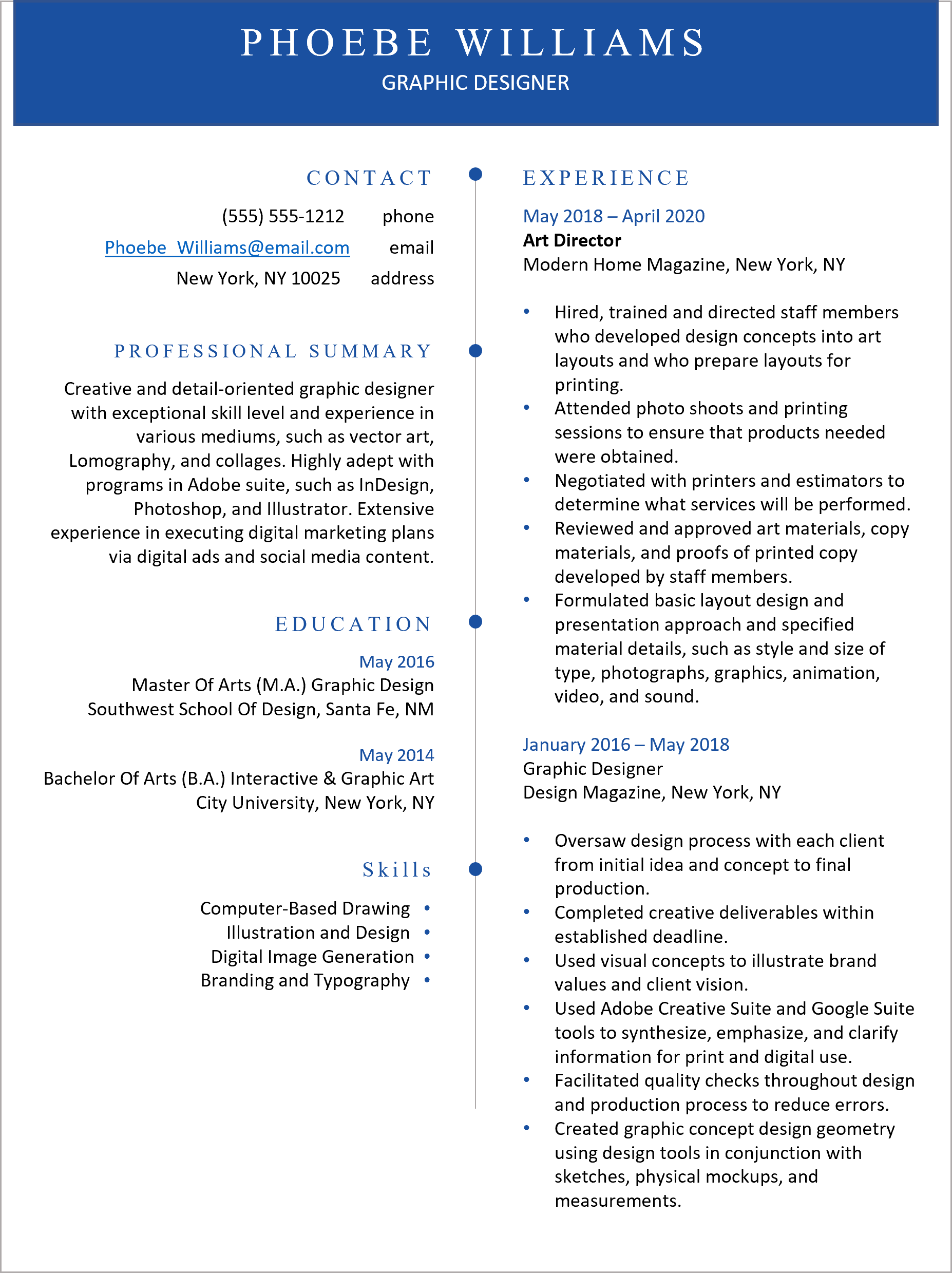 No matter what style you choose to follow, your resume will always include several basic sections. Each one is described below, and you can see how they can be arranged in an innovative way in the resume in the image to the right.
No matter what style you choose to follow, your resume will always include several basic sections. Each one is described below, and you can see how they can be arranged in an innovative way in the resume in the image to the right.
Depending on where you are in your career, a professional summary or profile can be an important part of today’s resume. A summary is essentially a professional profile. This section helps you stand out, shows your technical and proven skills with evidence, shares your passion and dedication to your work, and can list some key skills and accomplishments that are unique to you.
In a summary, you can tell employers what you can do for them, the value you bring, your strongest areas of expertise, and other standout information that entices them to read more. Instead of writing, “This is what I want from a job,” you are communicating, “This is what I can do for you”—a message that will resonate with employers.
OR
Notice how the title is in bold and the rest of the text is not. This helps to highlight each of your various past and current professional positions.
Under each position, you will also include a bulleted list that highlights skills, accomplishments, and other noteworthy aspects of your role. Make sure you list things in parallel form, always starting with an active verb, such as administered, coordinated, oversaw, evaluated, etc. Here you would also include exemplary and measurable achievements, such as “onboarded 35 new employees” or “successfully evaluated and redesigned 8 separate academic programs.”
Examples of good resume verbs can be found in the following article: 180+Power Action Words for Your Resume
One rule of thumb is to list only the last ten years of your work experience. However, if you think it is important for a potential employer to see particular jobs or roles, it is certainly okay to list jobs older than 10 years.
OR
- Volunteer work of any kind
- Special awards for jobs well done or other recognized accomplishments
- Presentations given at a conference
- Publications such as articles or white papers
- Special or additional certifications in your field
- Work on a Board of Directors or similar board
If you do include any of these sections, title them by category, such as “Volunteer Work,” “Awards,” “Publications,” “Certifications” and the like, and format them similarly to the way you formatted your Professional Experience and Education sections.
